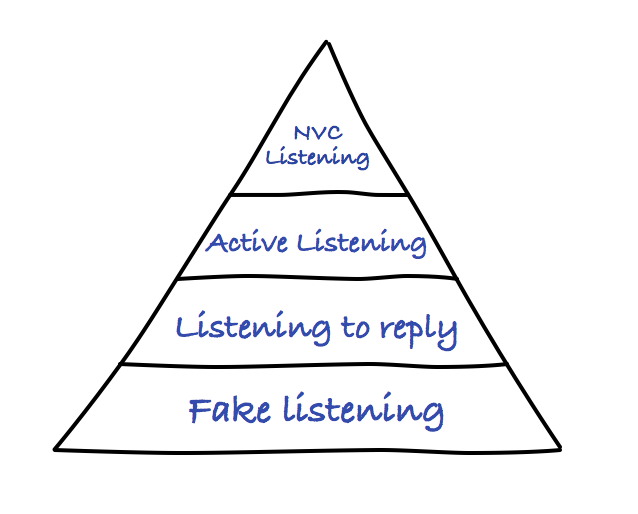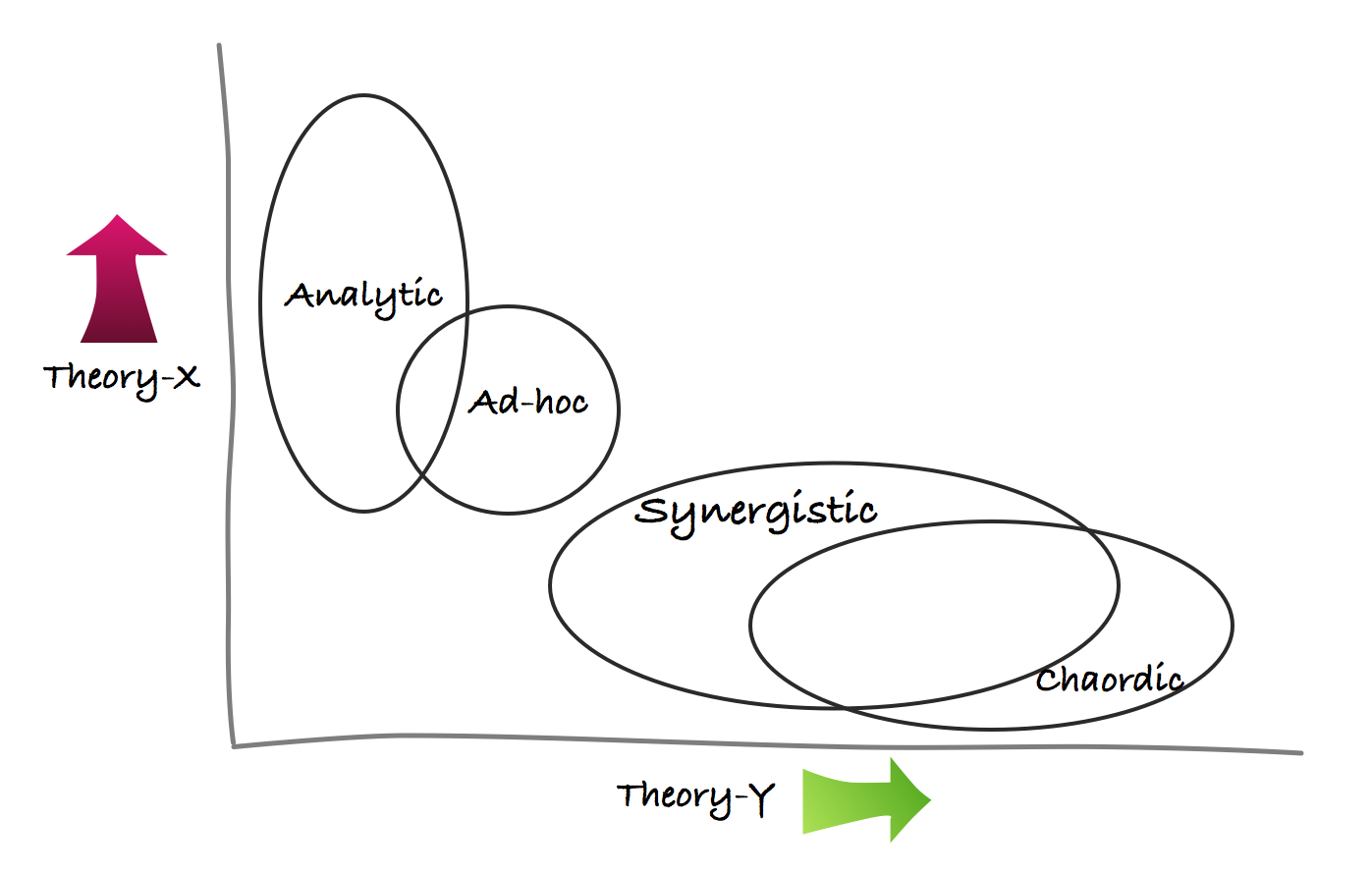Listening

“Listening…means entering the private perceptual world of the other and becoming thoroughly at home in it. It involves being sensitive, moment by moment, to the changing felt meanings which flow in this other person…. To be with another in this ways means that for the time being, you lay aside your own views and values in order to enter another’s world without prejudice. In some sense it means that you lay aside yourself…”
~ Carl Rogers
How often do you feel people are listening to you? That they’re interested in how you’re feeling and what you have to say? That by listening they’re connecting with you as a person? How often do you listen well enough that others feel that same way about you?
Practise
Whilst in Berlin last week for Agile Testing Days 2014, I chose to avail myself of the opportunity to practise my listening skills.
In the course of this practise, I’ve learned a few things – and had a mini-epiphany – which I thought might be useful to share with y’all.
“The moment one gives close attention to anything, even a blade of grass, it becomes a mysterious, awesome, indescribably magnificent world in itself.”
~ Henry Miller
Judgmental Listening
I’ve written previously about judgment and its connection with the quality of relationships. I’ve been practising for a year or two now on reducing the (moralistic) judgments integral to my observations. This has brought me to the point where I’m now aware of the judgments I’m making – and have been making all my life – whilst listening to things people are saying. You know the kind of thing. Someone says something and you immediately start evaluating what they’ve said, and, incidentally, the speaker themselves: “That’s cool”. “That’s dubious”. “That makes no sense to me”. “They must be mad/bad/stupid/awesome”. And so on. A whole host of judgments.
Hierarchy of Listening
Various researchers have written about hierarchies of listening skills. The hierarchy I have in mind does not correspond closely to the core themes of these other hierarchies. Rather, I’m looking here at the question of listening from the perspective of improving the quality of interpersonal relationships. Listening effectively can help raise the quality of interpersonal relationships, whilst listening ineffectively can actually undermine those relationships.

Fake Listening
Fake Listening describes situations where the “listener” is only pretending to listen. The sounds of the speakers words are heard, but the “listener” does not process those sounds to derive meaning. Fake listening can be accompanied with some or all the signs of active listening, but the speaker, sooner or later, notices that the “listener” is only faking it.
Listening to Reply
Maybe the most common kind of listening in our organisations, workplaces and working relationships today. Here, people listen just enough to detect when it’s their turn to say something, and to be able to say something seemingly relevant to the thread of conversation. Nancy Kline in her work with the Thinking Environment contrasts this with “listening to ignite thinking [together]”.
“To be an effective Thinking Partner is to proffer alert, present, non-judgmental and attentive silence to another while they are thinking. The person being listened to, the Thinker, is held in a benevolent field of attention, free of competition, in which the quality of the listening, is a ‘listening to ignite thinking’ not a ‘listening to reply'”.
~ Michael Heuerman
Active Listening
Active Listening involves listening with all senses. As well as giving full attention to the speaker, it is important that the ‘active listener’ is also ‘seen’ to be listening – otherwise the speaker may conclude that what they are talking about is uninteresting to the listener.
“Interest can be conveyed to the speaker by using both verbal and non-verbal messages such as maintaining eye contact, nodding your head and smiling, agreeing by saying ‘Yes’ or simply ‘Mmm hmm’ to encourage them to continue. By providing this ‘feedback’ the person speaking will usually feel more at ease and therefore communicate more easily, openly and honestly.”
Active listening not only means focusing fully on the speaker but also actively showing verbal and non-verbal signs of listening. Generally speakers appreciate listeners demonstrating their ‘active listening’ by the listener responding both verbally and non-verbally to what they are saying.
NVC Listening
I’m calling this state of listening “NVC listening” because it draws on the Nonviolent Communication work of Marshall Rosenberg. Specifically, Rosenberg invites us to “empty our mind and listen with our whole being” whilst “focussing on what’s alive, right now, in the other person”.
Other have described similar states and labelled them with terms such as “Therapeutic Listening” or “Empathetic Listening”. I choose not to use these terms, primarily because I use what I’m here referring to as “NVC Listening” as a practise technique for raising my awareness of my own judgmental listening, whilst actually trying to “empathise with what is alive in the person” to whom I am listening.
The noted Psychotherapist and creator of Client-Centred Therapy, Carl Rogers, defined empathy as:
[the perception of] the internal frame of reference of another with accuracy and with the emotional components and meanings which pertain thereto as if one were the person, but without ever losing the “as if” condition (Rogers, 1959, p. 210-211).
Active Listening vs Compassionate (NVC) Listening
There are many places on the web which explain Active Listening, its benefits, and how to practice it. But the outward signs of Active Listening can often belie our inner judgmental filters through which the speaker’s words are passing.
Compassionate listening, in contrast, need not have any outward signs. Although that might be disconcerting or unhelpful for the person speaking.
In practising NVC Listening, I try to combine the visible signs of Active Listening with internal aspects of compassionate (empathetic) listening. I try to notice myself whenever I’m beginning to start an evaluation or form a judgment, and short-circuit // override that in favour of getting in touch with what’s alive in that person.
Epiphany
The epiphany I mentioned at the head of this post is this:
We can notice our natural tendency to judgmental listening if we have something else to focus on. In NVC Listening I focus on what might be alive in the other person. Where they’re coming from. What’s important to them. Their possible feeling and needs underlying the things they’re saying.
I believe that we can improve our listening skills, and that skilful listening can have a deep impact on the quality of our relationships – relationships essential to working effectively with each other in knowledge-work settings.
Appreciating What’s Alive In People
Positive Psychology studies have revealed the positive effects on happiness, life satisfaction, energy, etc., that come from appreciation. Nonviolent Communication suggests we look for what’s alive in people.
“[Some people] have a wonderful capacity to appreciate again and again, freshly and naively, the basic goods of life, with awe, pleasure, wonder, and even ecstasy.”
~ A.H. Maslow
Whenever I’m practising NVC Listening, I’m not only also trying to sense what’s alive in the person to whom I’m listening, but also I’m trying to appreciate that aliveness. To value it. To savour it. To give thanks for it. When it’s working for me, this appreciation gives me the energy I need to continue.
“Whenever we are appreciative, we are filled with a sense of well-being and swept up by the feeling of joy.”
~ M.J. Ryan
Listening to Ourselves
All of the above not only applies when we’re listening to other people, of course. It applies at least as much when we’re listening to ourself. To our own thoughts, feelings and needs.
Irony
And the irony of writing about listening – absent any immediate opportunity to listen to the thought and reactions of the reader, and connect with them as people – is not lost on me.
Invitation
I invite you to have a go at “NVC Listening” when you find yourself with a suitable opportunity. I’d be delighted to hear how it seems to affect the quality of the relationship with the person – maybe even yourself – to whom you are listening.
– Bob
Further Reading
Nonviolent Communication: A Language of Life ~ Marshall Rosenberg
More Time To Think: A Way of Being In The World ~ Nancy Kline
Active Listening ~ Skills You Need
It’s Not Enough To Listen ~ Jessica Grogan, Ph.D.






